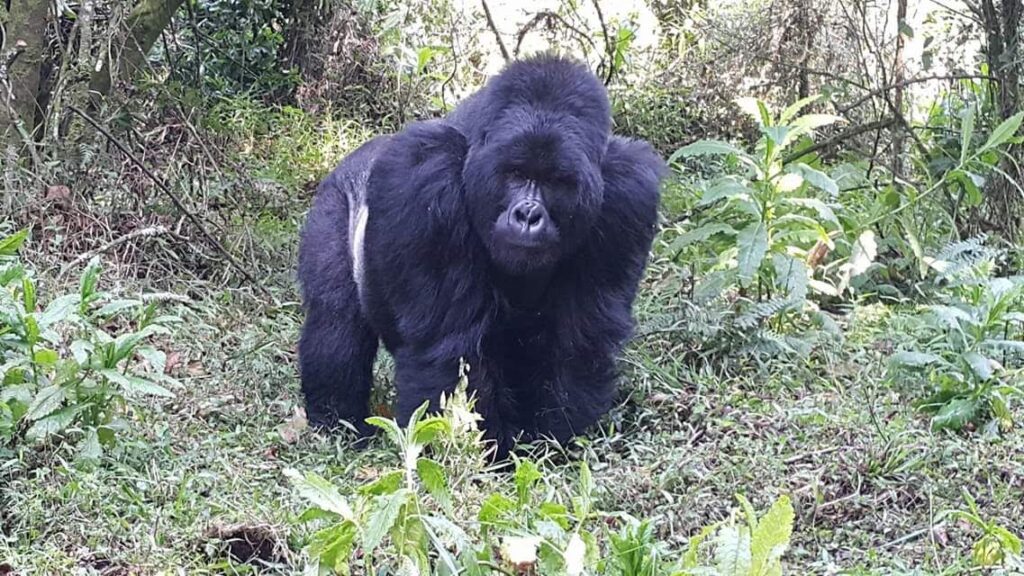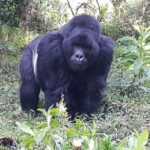Many people all over the world travel long distance from the home countries to see these great apes in their natural habitat in the act known as gorilla trekking. Gorilla trekking safaris can only be done in Bwindi and Mgahinga National Parks of Uganda, Volcanoes National Park Of Rwanda and Virunga National Park of the Democratic Republic Of Congo. Gorilla trekking is one of the things none shouldn’t miss before living plant earth because this act is worthy a million experiences. Although many travel from their home countries to either Uganda, Rwanda Or Congo, they do not no the life style and how mountain gorillas do survive in the rain forests. Here it is :-
Reproduction
Mountain gorillas have a slow rate of reproduction, and a female mountain gorilla is ready to reproduce for the first time when she is about 8-10 years and will have new offspring every four or five years. And a male silver back normally brings to bleed at the age of between the ages of 12 or 15when he is in charge of its group the fertilization and the mating seasons is throughout the year. The female produces a single young and case of twins are rarely heard. The gestation period is a bout 8 months and during this period a female leaves a group and may be join a another group or join a lonely sliver buck. After conceiving she must first leave the safety of her own troop and find another troop or a lone silverback to live with. A female gorilla will give birth to an average of 3-5 babies during her lifetime. A baby gorillas are weak and tiny weighing at least 3-4 pounds. Their movements are as ill at ease as those of human infants, although their development is roughly twice as fast, young gorillas learn to creep at about 2 months and they normally walk around 8-9 month. It suckles for approximately one year Mother Gorillas normally nurse their babies for about 3 years until when the baby become more independent. If you want to come across gorillas you will see it by their nests where they would have slept the previous night. If they have been in an area recently, it may smell like sweat from humans. Gorillas normally leave a peaceful life always conflicts can occur when troops interact, particularly if a solitary male contacts a new group.
Habitat
Mountain gorillas of Rwanda live in tropical forests others in the extreme elevation of the mountain. They live in a small family groups known as troops normally between 12-30 members and a true gorilla troop includes one dominant silver-back a male leader which is always between 12-15 years of age, one or two immature male, three or four adult females and three to six young offspring under eight years of age. The male gorilla is responsible for the fertilization of all males in the troop. It also takes on the responsibility of detecting danger he fights to protect the troop even if it means loosing his life he does so for the good of the troop. The other males in the troop will also fight along side the dominant male to protect their families. Young male gorillas usually leave their family group when they are about 11 years old and have their own family group by the age of 15 years old. Young female gorillas join a new group at about 8 years old. Mountain Gorillas have strong attachments to members of their own group and even when groups meet and mingle and then subsequently part, each animal tends to remain with its respective unit.
Diet
mountain gorillas are herbivores they most of the time eat plant material and animal of this size need a lot of food, they eat a lot. They eat leaves, fruits, seeds, tree bark, plant bulbs and flowers. They also eat termites and aunts to supplement their diet. They have been known to eat various parts of over 200 different plant species. They rarely drink water. The average adult male eats approximately 50 pounds of food a day
Threats to mountain gorilla
Habitat losses since many people have moved into areas near mountain gorillas they have cleared land for agriculture and livestock. In the year 2004, for example, illegal settlers cleared 3,700 acres of gorilla forest in Virunga National Park. Locals also generate income by cutting down trees to create charcoal. Gorillas move to find food and that can be a problem when the areas that they have to travel become smaller and smaller.
Poaching, mountain gorillas are also hunted for bush meat or pet trade others are caught and harmed by snares set for other animals. During the 1994 Rwandan genocide and a wicked ongoing civil war in Congo, Virunga National Park, over 200 gorillas, has become a battleground for militia groups and the Congolese army this also contribute to their loss. Mountain gorillas, are also affected by climate change, which has the potential to impact gorillas directly by altering their habitat.


